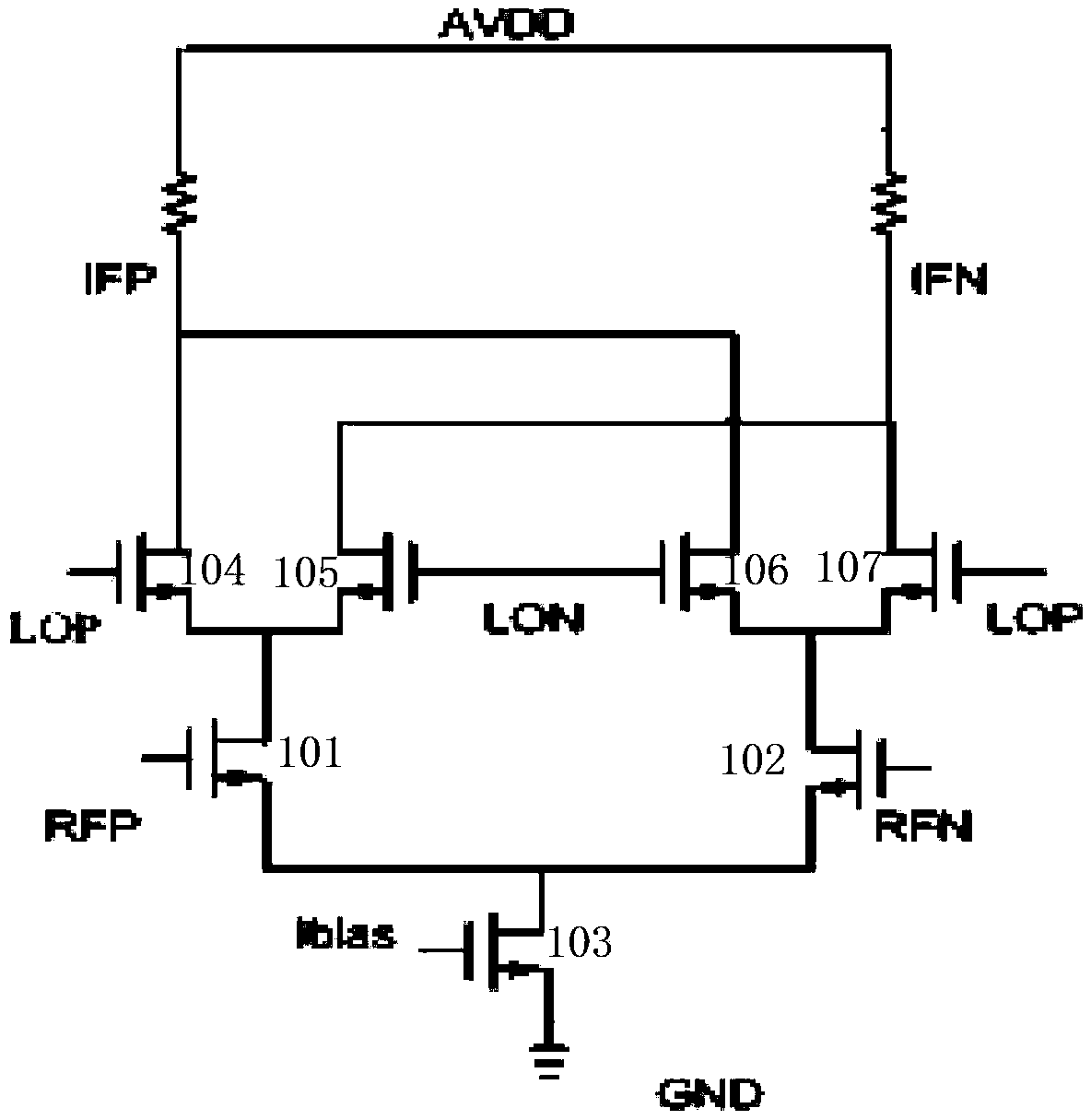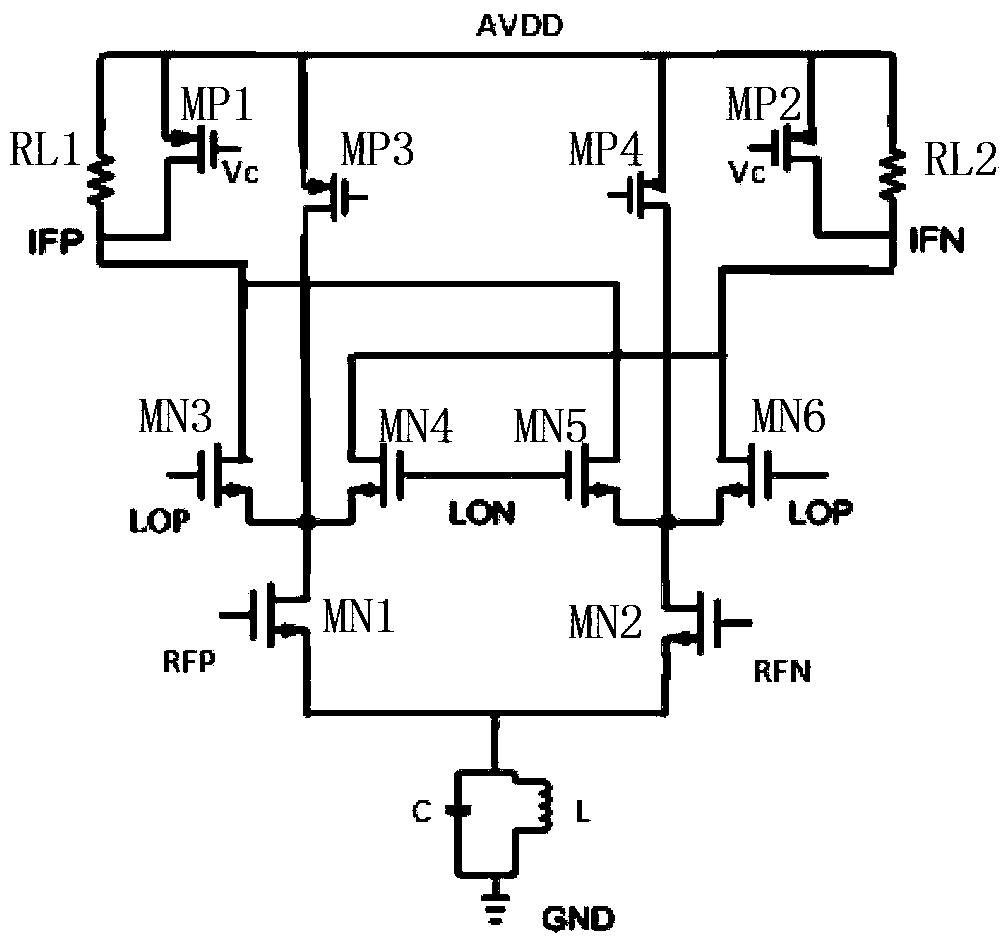CMOS down-conversion mixer
A mixer and radio frequency technology, applied in the field of CMOS down-conversion mixers, to improve noise performance, reduce overdrive voltage, and reduce current
- Summary
- Abstract
- Description
- Claims
- Application Information
AI Technical Summary
Problems solved by technology
Method used
Image
Examples
Embodiment Construction
[0030] Such as figure 2 Shown is the circuit diagram of the CMOS down-conversion mixer of the embodiment of the present invention, and the CMOS down-conversion mixer of the embodiment of the present invention includes:
[0031]The radio frequency differential input circuit is composed of a first NMOS transistor MN1 and a second NMOS transistor MN2, the gates of the first NMOS transistor MN1 and the second NMOS transistor MN2 serve as two radio frequency input terminals and are respectively connected to two differential radio frequency Voltage signals RFP and RFN, the sources of the first NMOS transistor MN1 and the second NMOS transistor MN2 are connected together, and the drains of the first NMOS transistor MN1 and the second NMOS transistor MN2 serve as the radio frequency The two output terminals of the differential input circuit respectively output two differential radio frequency current signals with the same frequency as the differential radio frequency voltage signals ...
PUM
 Login to View More
Login to View More Abstract
Description
Claims
Application Information
 Login to View More
Login to View More - R&D
- Intellectual Property
- Life Sciences
- Materials
- Tech Scout
- Unparalleled Data Quality
- Higher Quality Content
- 60% Fewer Hallucinations
Browse by: Latest US Patents, China's latest patents, Technical Efficacy Thesaurus, Application Domain, Technology Topic, Popular Technical Reports.
© 2025 PatSnap. All rights reserved.Legal|Privacy policy|Modern Slavery Act Transparency Statement|Sitemap|About US| Contact US: help@patsnap.com



